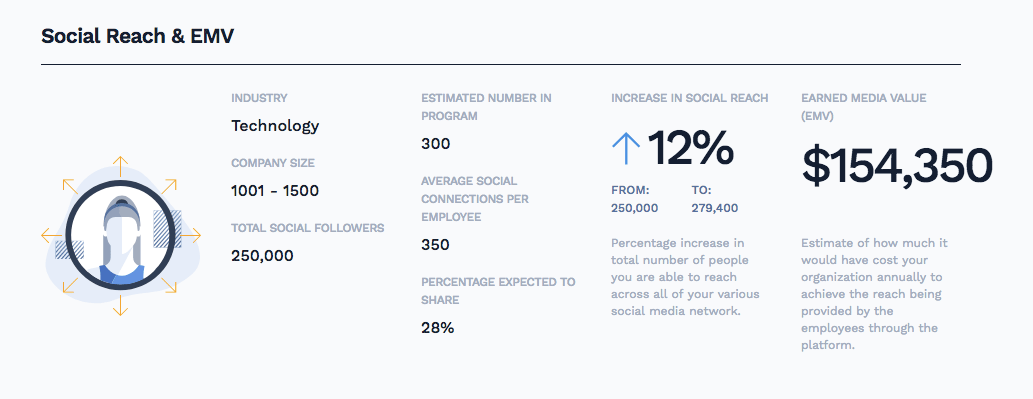Whether you’re ready to launch or scale an employee advocacy program, chances are budget is on your mind. Despite popular belief, you don’t need to increase your marketing budget to include employee advocacy.
The question of budget is often a difficult one to answer but inevitably one that needs to be addressed. Here’s the challenge when answering the question of budget: every organization is different so there are numerous factors affecting the cost of rolling out an employee advocacy program. There is no “one-size-fits-all” approach to pricing which is why every customer engagement must be contextual.
You’ll find several ROI calculators available where you can input several factors such as the number of employees, employee reach, and paid advertising metrics. However, these are mere guidelines that give you a general sense. There are a number of factors to consider such as the department you’re looking to launch with, content creation, incentivization, technology, and training.
Each variable needs to be looked at and determined by its own individual merits.
What’s the true cost of an employee advocacy program? In this blog, we will explore the factors that influence the overall cost of launching a program and how to allocate budget accordingly.
Factors Affecting Budget
When launching employee advocacy, there are several factors which directly influence how effective your program will be. Here ones you’ll need to consider:
Content Creation
Without content marketing, an employee advocacy is doomed to start off on the wrong foot. When implementing a program, you should be aware of content production and what new content needs to be created. If there are gaps in your content then creating relevant materials should take precedent, which will affect the budget. In most cases, leveraging existing content is a great start to getting the ball rolling.
The Right Platform
Having the right technology solution is essential for scaling your employee advocacy program — there’s no way around it. Employee advocacy requires investing in new technology as a core piece of your overall strategy. It’ll provide you with an efficient way to distribute content to employees and allow them to easily share content from one centralized library.
Before investing in technology, many B2B marketers start by sending internal email reminders to their employees. Although this is a good start, internal emails are unscalable and don’t provide the right metrics for employee engagement and content performance.
Gamification and Incentives
Motivating employees is a key component to a successful employee advocacy program. There will be a minority of employees, who no matter what will share your content because they share the same company values and vision. However, the majority of employees will need to be motivated through gamification and incentives.
For example, sales professionals who are compensated for performance are also very competitive. If your employee advocacy program has a leaderboard feature, you can use this to spark competition and reward the top performers.
Incentives don’t have to be lavish; however, they should be thoughtful and relevant to the value proposition of your program. They can be small wins such as gift cards and company swag to new gadgets. At PostBeyond, we reward whoever holds the top spot on the leaderboard with an “Undisputed Employee Advocacy Championship” belt as a fun form of recognition.
Employee Time
Like most marketing program launches, the time it takes to implement a new program affects budget because it involves your employees’ time spent. Time is also dependent on the urgency of your organization to launch. In most cases, PostBeyond customers want to kick start as soon as possible.
When budgeting for time, be conscious of what the incurring cost is, not just for rolling out the program but also how much of your employees’ time you’ll need. Most employee advocacy platforms can reduce the time to market by making it easy to onboard employees. If there is an implementation plan included in your employee advocacy program, it will help to ensure your time to launch happens faster.
Start With a Pilot Program
If you’re new to employee advocacy, starting off with a pilot program is a recommended approach. By starting with a pilot, it’ll be easier to secure budget and prove program adoption and value. You’ll get a good indicator of employee engagement, what works (what doesn’t), and any initial traction and program wins through implementing the right measurement framework.
A pilot program must include two important factors: the right employees and the right metrics. Having both of these factors will create smoother employee adoption and solid metrics to forecast out future program goals.
The right employees to pilot an employee advocacy program should be chosen based on program use cases and objectives you want to accomplish. Most often, social-savvy employees are great to launch a program with.
Organizations should also tap into their existing brand advocates. These are employees that already act as thought leaders, social media power users and/or ambassadors of your brand. This group understands the purpose of employee advocacy and how to use social media in the workplace. They are vocal which means they will provide constant feedback on what needs to be improved to ensure your employee advocacy is on the right track.
Other groups can include sales teams such as an Inside Sales team which uses social media to prospect. Socially-savvy executives and different departments such as Communications or Human Resources can also be great choices.
Where to Find Budget for Employee Advocacy?
Innovation Budget
In most marketing departments, there’s budget allocated to test innovate new ideas and experimentation. This can be a great place to look for the budget to allocate for employee advocacy. You can use these funds to kickstart a pilot program, just be sure to set the metrics to measure program performance.
Before allocating budget from an innovation fund, ensure you have a plan for measuring success. Make sure you’re looking beyond just vanity metrics (likes, comments, and impressions) and go deeper (adoption rate, content engagement, earned media value, and lead generation).
Be conscious that an initial experiment won’t generate deeper funnel metrics like pipeline, revenue, and velocity or ACV (Average Contract Value), especially if you’re accustomed to longer sales cycles.
Partner with Other Departments
An employee advocacy program doesn’t necessarily fall solely on marketing, best-in-class programs involve multiple departments such as Sales, Communications, and Human Resources. It’s a two-way street of communication for marketing. In most cases, marketing can enable different departments such as helping Human Resources with employer branding or empowering Sales with content for social selling.
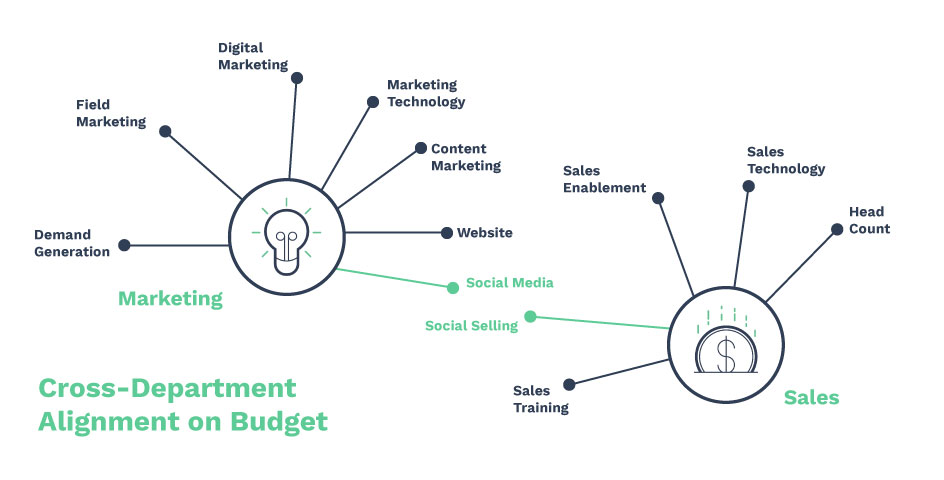
Employee advocacy can help sales professionals establish their market, connect with prospects and close deals. If you’re struggling to find budget, a great opportunity for alignment is to ask your sales leaders to help fund an employee advocacy program. Before doing so, just make sure the WIIFM factor is clear.
For human resources, employee advocacy can help build a better employer brand. This will help attract top talent, who align with your values and create more transparency and better communication internally. The Human Resources or Communications department is also a great resource to help fund an employee advocacy program.
Reallocating Budget
In most scenarios, B2B marketers will have to reallocate budget and work within certain limitations to fund and launch an employee advocacy program. Marketers who fit this position will have to be conscious of where their budget is currently going and have an honest conversation about how current performance measures up in comparison to employee advocacy.
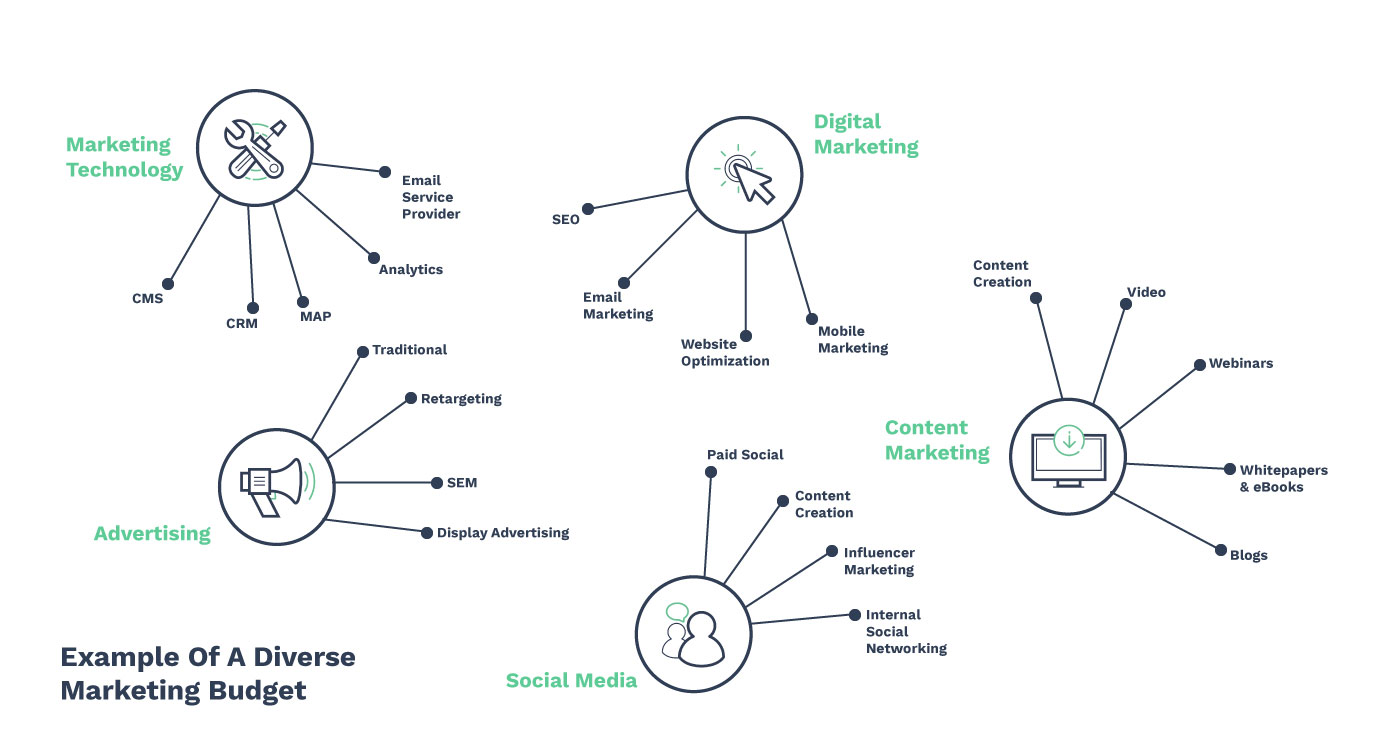
Your CRM, Marketing Automation Platform or Analytics are all definitely off-limits; however, you can look at the current channels you’re investing in. Start with a list of budget items to determine what can be reduced or reallocated.
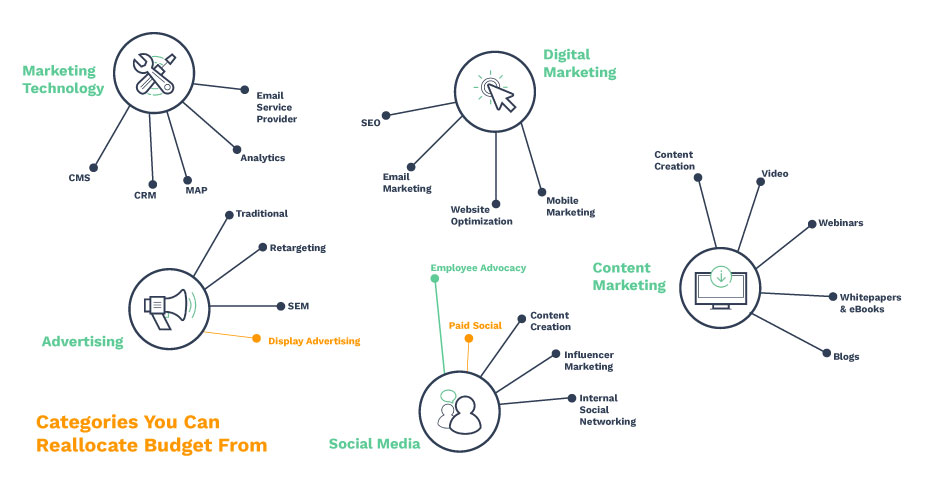
For example, most B2B marketers have increased their spend on paid social media marketing to combat declining organic reach on networks like Facebook. By re-allocating some of your existing paid social budget to employee advocacy, you can reduce ongoing costs and produce better results by leveraging your employees to amplify content.
Whatever leftover budget can be reallocated or further invested in onboarding more employees onto your employee advocacy platform. This is just one simple way where you can identify low-hanging budget, assess measurements, and reallocate funds based on performance.
Include it in Other Initiatives
For most organizations, social media has been a key channel for brand awareness, customer acquisition and share of voice. If you’re a B2B marketer who currently manages social media, employee advocacy can provide a great opportunity to accelerate your existing initiatives.
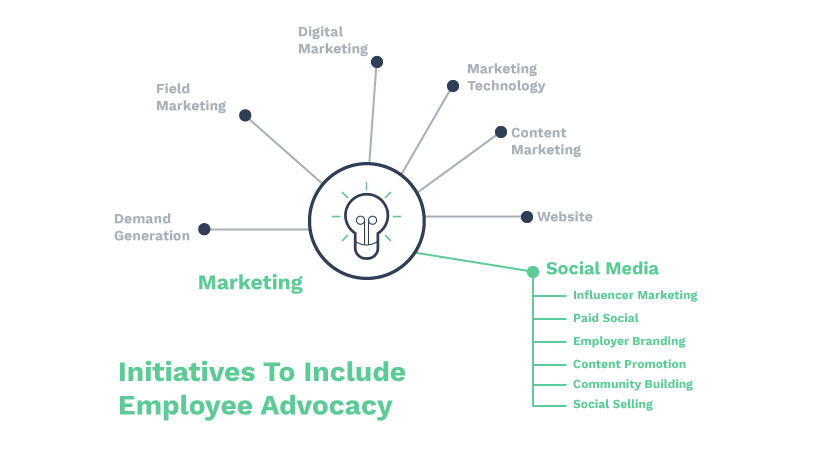
For example, content marketing budget typically includes promotion power which focuses on amplifying the reach of your content. Assess the promotional channels you have (or may not have) for your content and determine how much engagement you can expect from employee advocacy. Another example involves aligning with sales if they have a current social selling program that requires content and social media etiquette.
Ensuring a Successful Launch
Set Clear Goals
- Surprisingly, 28% of managers are unaware of any employee advocacy measurements. Be sure to have the right measurement framework in place before launching and optimizing a program.
Implement the Right Technology
- Ensure the right technology is in place and employees know how to use it. This will help centralize all your content within one library and make it easy for employees to share.
Align the Right Teams
- Depending on use case, ensure everyone is bought-in and understands what’s in it for them. Having the right people onboard will dramatically affect initial success.
Be Sure to Have Plentiful Amount of Content
- Without content, employees will have nothing to share because advocacy and content go hand-in-hand. Having the right balance between quality and quantity of content will ensure employees have choices for what they want to share.
Set Social Media Guidelines
- Sharing content can be beneficial for both the company and for employees. Although employees do want to share on social media, they may not know how to share or even what content to share. Setting social media guidelines can encourage employees to share in an authentic and safe manner that helps to ensure messages are compliant.
Budgeting for Your Employee Advocacy Program
Allocating the right budget is a fundamental part of your employee advocacy program. Determining the ROI of employee advocacy is not a linear path, like lead-to-revenue, since programs are designed to increase brand awareness, share of voice and engagement on high-value content. When considering an investment in employee advocacy, there are several considerations to be mindful of such as technology, content, and incentives. Since setting a budget for employee advocacy may not have been solidified to start, there are ways to find some budget internally. Just be conscious of where the budget flows internally and who the best leaders are to align with on a budget.

